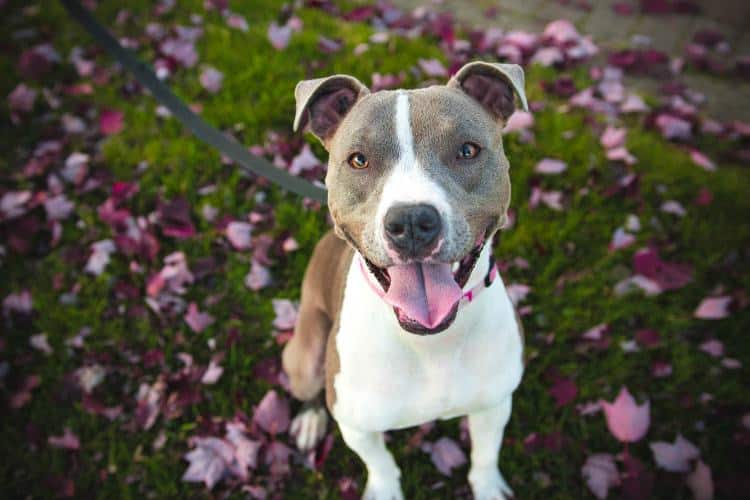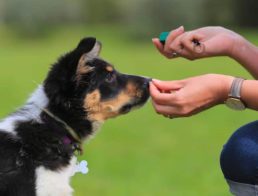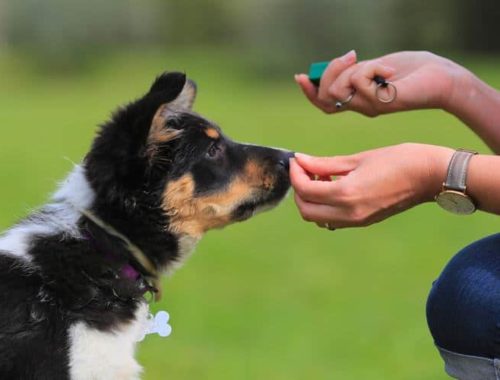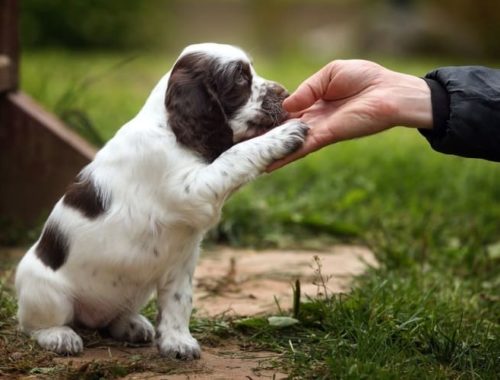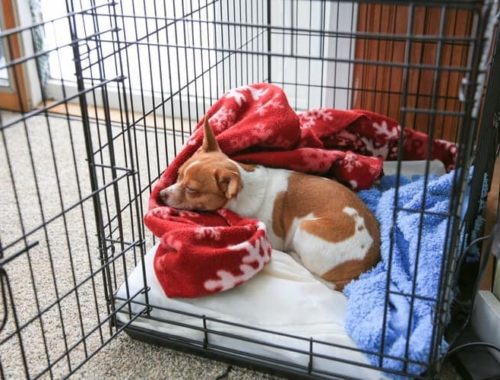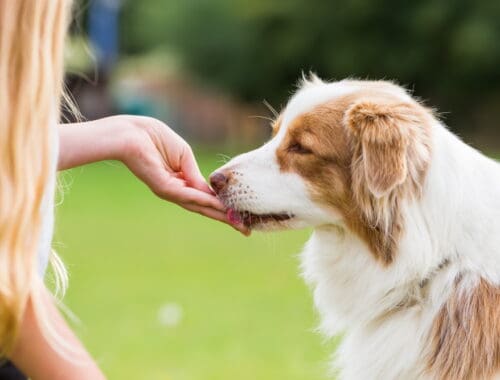Dogs have a well-earned reputation as “man’s best friend,” but let’s face it: they can also be a pain in the butt! All canines require a lot of work, but an untrained dog can make your life more stressful and difficult. Responsible and rewarding dog ownership will require at least some level of training. If you’re wondering how to train a dog, this guide will help get you started on the right paw – err, foot! First, a brief overview of the dog training steps we’ll be discussing today:
- Choose the right breed for your lifestyle
- Get the right equipment
- Identify desired outcomes
- Create or follow a detailed training plan
- Give immediate rewards
- Be consistent
- Know when to seek professional help
Successfully training a dog is a long and involved process – but if you go into it with the right knowledge and resources, you can make it a more successful venture. The guide below is intended to be an introduction to dog training. You will also find links to valuable resources where you can learn specific techniques and training styles. Let’s get started!
- Choose the right breed for your lifestyle
First and foremost, it is imperative to select the right breed of dog for your lifestyle, personality, and goals. Different breeds have vastly different energy levels and training requirements. Some dogs are perfectly content sitting at home for 8 hours a day while you go to work, while other breeds will be unhappy with anything less than a full-time-farm-dog lifestyle. For more information on selecting the right breed, check out the American Kennel Club’s dog breed guide.
- Get the right equipment
Successful dog training does not necessarily require a ton of expensive or fancy equipment, but you will need to purchase some basic items to begin training. For puppies, a 6-foot leash and flat collar setup will do. For full grown dogs and dogs with particularly poor behavior, you may need to purchase a no-pull harness, promise leader, etc. Additionally, you’ll want to stock up on treats to bribe your little buddy.
- Identify desired outcomes
“Training a dog” can mean a lot of things, depending on who you ask. A professional breeder who raises show dogs will have vastly different expectations of his dog than the average person will have for their pet. This is why it is important to identify the desired outcomes of training and come up with a plan. The ASPCA’s list of common dog misbehaviors will help you identify potential issues to address. You’ll also need to prioritize your training efforts to focus on the behaviors that are most important to you. Don’t overwhelm your dog with attempting to teach 10 behaviors at once – identify the most important and focus on those first.
- Create or follow a detailed training plan
Dogs learn well through consistent, reward-driven training practices. In order to set your intentions for training, you will want to make a detailed training plan – or find one online to follow along with. This 6-week training guide is a good place to start, or you can utilize WikiHow’s guide to specific behavior training to come up with your own plan. This step should also involve setting aside adequate time for training – ideally somewhere in the range of 15-20 minutes, at least once or twice per day.
- Give immediate rewards
Dogs respond best to positive reinforcement training, which typically involves giving immediate rewards after a dog demonstrates a positive behavior. The rewards can be treats, verbal praise, physical praise, or a combination of all three. The key to successful positive reinforcement with dogs is timing. After your dog performs a desired behavior, you need to supply an immediate reward – meaning within 2-3 seconds. Otherwise, your dog can begin to associate the reward with the wrong behavior. For example, if you reward little Fido with a treat for sitting down, but don’t give it to him until he stands back up, he will begin to associate the reward with standing up, not sitting down.
- Be consistent
When training a dog, consistency is key. Be consistent with your training techniques, rewards, encouragement, and discouragement. If there are other people in your household, make sure they are using the same commands and rewards, so the dog will learn to associate the behavior and reward with the commands, and not just the person. With all that said, if a training technique simply isn’t working, you may need to try another approach – which leads to the last point.
- Know when to seek professional help
While self-training a dog is certainly possible and can be quite rewarding, it doesn’t always work. You might end up with a particularly difficult dog that requires the firm command of a professional dog trainer. You might not have the time in your busy schedule to set aside for training. Or, you might just not have the personality and patience required to be successful in training a dog. Regardless of the reasoning, it’s vital that you recognize when it’s time to seek the help of a professional trainer. If you do decide to go this route, check out this guide for help with selecting a trainer.
Successful training can nurture a lifelong bond between you and your dog, so it’s well worth the effort. Hopefully this guide has provided you with the resources you need to get started. Good luck, and we’ll see you at the dog park!
If you’re looking for additional training advice, make sure to check out our other pet training articles.


